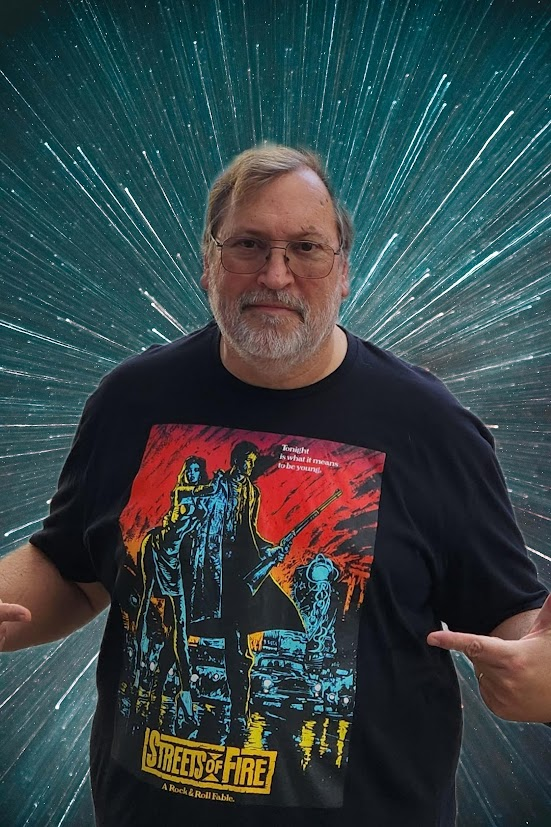The Paramount Summer Classic Film Series finishes off with another presentation by Robert Rodriguez, of the film "What's Up Doc?" This is the same film that finished the summer series last year, and it was hosted by Rodriguez then as well. His presentation before the film continued to be interesting but it was not as elaborate as the introduction he gave last year, but it was just as enthusiastic. This is clearly a movie that he loves and is happy to share with the audience. While sitting in the theater which was packed, I listened to the sound of laughter coming from several hundred audience members, I was reminded about why seeing a movie in a theater with an audience matters. This kind of experience reminds us that we all can find something in common, and that we are human beings capable of enjoying a shared experience, even without interacting with one another. Of course since it was the closing night film, there were some special events that went along with the evening, and that did encourage us to interact with one another. Two guys we had met in the garage elevator of the parking structure across the street, were seated right behind us. There was a trivia contest going on and we teamed up with them to participate. I know I had a lot of fun, and I think they did as well. The fact that we came in second place was only mildly disappointing because we were one wrong answer off, and we'd guessed ourself out of the correct answer on one of the questions. Oh well, we still had the movie to look forward to.
At the time this movie was made Barbra Streisand and Ryan O'Neal were huge stars in Hollywood. O'Neill was coming off of "Love Story" which was the biggest Blockbuster of 1970, and Streisand was an academy award-winning actress who also had huge successes with a variety of films in the previous four or five years. Director Peter Bogdanovich was also on a hot streak. This film he made to explicitly be a screwball comedy in the mode of the great 1930s films that he loved. Rodriguez told the story about how the original script ended up being rewritten, by Buck Henry, who apparently had a pretty good idea about what makes something funny.
The movie introduces us to Madeline Kahn, who would become a comic icon for the next 20 years. Her role in this part might be thought of as thankless, because her character is such a wet blanket. But she turns out to be a wet electric blanket, shocking us with how funny she could be while playing a drudge. She gets a surprising number of laughs as the straight man in the story. Of course she is surrounded by a cast of secondary characters who are equally good at getting laughs from some of their few moments on screen. Austin Pendleton and Kenneth Mars both delight us with their ridiculous delivery of some of Buck Henry's lines. Mars uses an accent that seems like it will show up again in "Young Frankenstein" a couple years later.
The slapstick in this film centers around four identical suitcases that all have varying degrees of valuables in them. One suitcase contains nothing but rocks, but they are important rocks. One suitcase is full of secret government documents revealing a scandal. Another suitcase is loaded with jewelry that belongs to a wealthy visitor to the hotel where everyone is staying. The final suitcase simply contains the personal items of our leading lady. The pursuit of these various suitcases, and the comedy of changing hotel rooms, opening and closing doors, and hiding under beds, in closets, and on window sills, is exactly the kind of humor that you would find in one of those old movies. Here it is just multiplied.
The climax of the film is a street chase thru the city of San Francisco. O'Neal and Streisand are on a delivery bicycle, careening down the hills, crashing through a Chinatown street parade and generally causing havoc. Of course in the 1970s, there have to be car crashes, and there is an abundance of them from all the pursuing vehicles. The bit with the giant window pane is staged beautifully so that the payoff is much funnier than it would have been in someone else's hands. The rapid film style follows the same pattern as the patter in the first section of the film, with multiple points, finished off by a topper. Bogdanovich was a film scholar who understood how to read a scene.
I saw this movie years ago on television, but I had very little memory of it. I have seen it the last three times, in a theater, with a packed audience and it is such a treat. I'm sad the Summer season is over but I am grateful for all the movies I saw at the Paramount in the last three months. This cherry on the top will have me thinking about next years programming, all Fall and Winter long.










